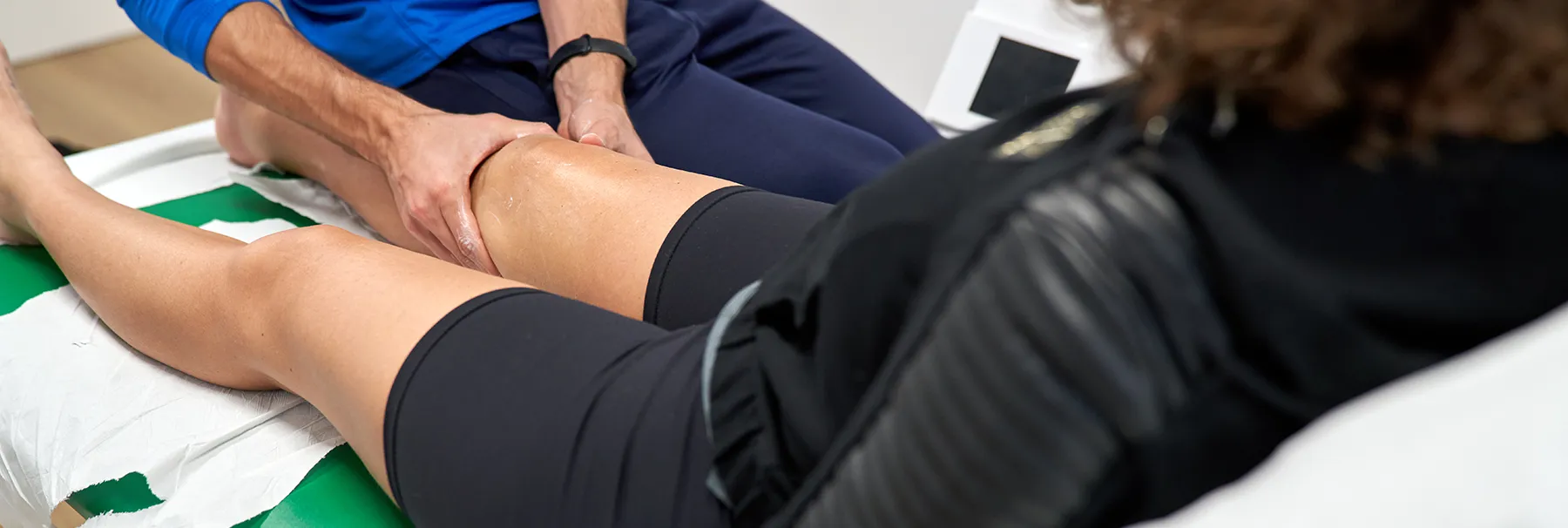Improving Total Knee Replacement Surgery

A new guide published by Miller School researchers hopes to improve the safety and accuracy of robot-assisted procedures.
Researchers at the University of Miami Health System’s Miller School of Medicine have created a guide to make robot-assisted total knee arthroplasty (RATKA) safer for patients. Their guidelines recommend ways surgeons can reduce nerve and blood vessel damage during RATKA. The guide is titled “Safe Zones and Trajectory of Femoral Pin Placement in Robotic Total Knee Arthroplasty,” and was published on September 19, 2023, in the journal Arthroplasty Today.
Arthroplasty is a surgical procedure that replaces an injured or worn-out knee joint to relieve pain and restore mobility and function. Using robot-assisted technology, an orthopaedic surgeon replaces the damaged bone and cartilage with a prosthetic made of metal and plastic. Robotic techniques increase the accuracy of a total knee replacement procedure. Recommendations from Miller’s recently published guide will enhance the process by helping reduce complications and speeding up recovery for patients.
Precision Positioning
Before starting arthroplasty, a surgeon inserts several pins through the patient’s skin into their thigh (femur) and shin (tibia) bones. These pins guide the robotic arm during surgery. Complications such as infection or bone fractures around the pin sites can occur and have been well studied. But potential damage to nearby nerves and blood vessels has not, until now.
“We are recommending how orthopaedic surgeons can place the pins safely to avoid vessels, nerves, and big arteries,” says Victor H. Hernandez, M.D., an orthopaedic surgeon at UHealth and chief of Arthroplasty and Adult Joint Reconstruction at the Miller School.
Dr. Hernandez and lead study author Jaime Carvajal Alba, M.D., collaborated with colleagues from Miller’s Department of Orthopaedics and Department of Radiology. Dr. Carvajal Alba is also an orthopaedic surgeon at UHealth. Together, they developed guidance based on a study of MRI images of people undergoing robot-assisted total knee replacement.
A Faster Recovery
To determine best practices, Dr. Hernandez and his colleagues divided the MRI scans into zones and noted the location of nerves and blood vessels. Their guide demonstrates the optimal location and angle for pin insertion, which decreases the risk of damage to nerves and vessels and shortens the patient’s recovery time. Because nerves and vessels around the knee differ between men and women, the study authors also addressed pin placement by gender.
The work of Dr. Hernandez and his colleagues is another example of how Miller researchers stay at the forefront of rapidly evolving medical technology.
“We are the ones who publish the papers people quote or base their practices on,” Dr. Hernandez says. “We have access to three different robots—virtual, mixed, and augmented reality, as well as wearable devices. There’s no facility in South Florida that has that many technologies to benefit patient care.”
Virtual technology allows surgeons to create a three-dimensional (3D) virtual model of a patient’s knee using a computed tomography (CT) scan. The surgeon then uses the model to guide the robotic arm as it places prosthetic components of the new knee during surgery.
Augmented reality also creates a 3D model of the patient’s knee but requires the surgeon to wear augmented reality glasses during a procedure. This method helps the surgeon assess the damaged bone and cartilage and aids in the surgical planning and placement of the knee implant.
As the name implies, mixed reality (MR) technology combines virtual and augmented reality to produce an overlay of 3D virtual computer-generated images in real-time. This eliminates the need to operate additional equipment during surgery.
Original article written by Damian McNamara. Adapted for UHealth Collective by Nancy Moreland.
Careers
Interested in becoming a surgical technician at UHealth? Browse our open positions here.
Tags: Dr. Jaime Carvajal Alba, Dr. Victor Hernandez, RATKA, robot-assisted total knee arthroplasty, total knee replacement
